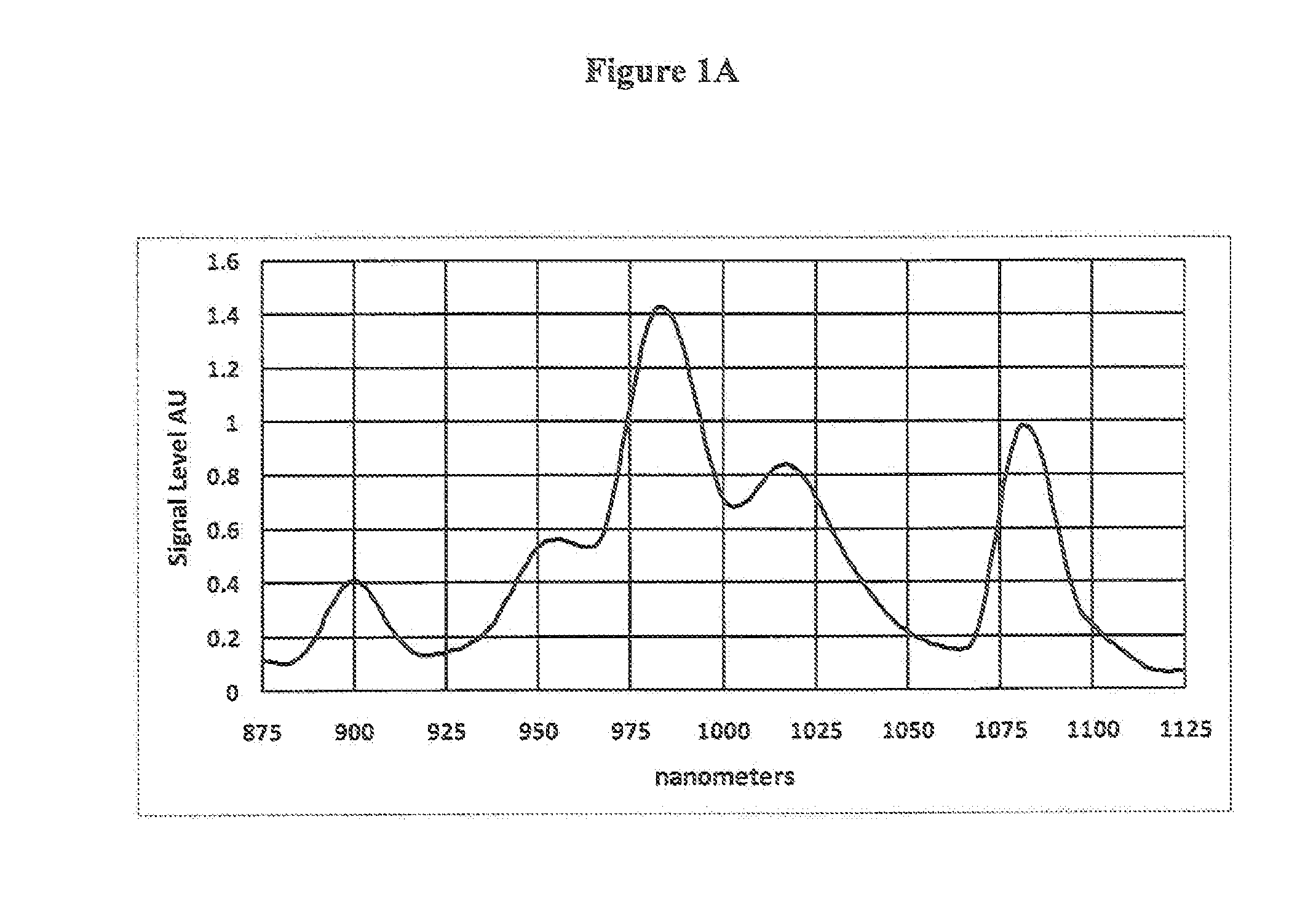Controlling the detectability of an article and method for authenticating the article
- Summary
- Abstract
- Description
- Claims
- Application Information
AI Technical Summary
Benefits of technology
Problems solved by technology
Method used
Image
Examples
example 1
[0033]A yttrium oxysulfide cascading phosphor substituted with neodymium (0.7%), ytterbium (4%), and holmium (2.0%) to produce YOS:Nd0.007:Yb0.04:Ho0.02 where the percentages are the amount substituted for yttrium in the host lattice material. The phosphor is excited at 760 nm corresponding to a Nd absorption in that spectral area. A graphical depiction of the emission spectrum is shown in FIG. 1A and FIG. 1B. In this example, as shown in FIG. 1A, the emission peaks at 900 and 1080 nm corresponds to Nd, and the remaining peaks centered at 980 nm correspond to Yb emission. The Nd transfers the energy over to Yb and emission can be observed for Yb. The Yb then transfers energy to Ho providing emission in the 1900-2100 nm range. Transfer from Nd to Ho is not present. In alternative examples, the emission can either be quenched or present for the Nd. FIG. 1B shows a wide band emission from 1900-2100 rim that corresponds to Ho emission for the emission spectrum of FIG. 1A. In this partic...
example 2
[0034]A yttrium gallium garnet cascading phosphor substituted with erbium (10%), thulium (1%) and holmium (1%) of the formula YGG:Er:Tm:Ho. The phosphor is excited in the 600-700 nm range, which is the primary absorption range for Er. The energy transfers to Tm, which emits at 1700-1900 nm. The Tm then transfers energy to Ho, which emits in the 1850-2150 nm range.
PUM
| Property | Measurement | Unit |
|---|---|---|
| Nanoscale particle size | aaaaa | aaaaa |
| Wavelength | aaaaa | aaaaa |
| Wavelength | aaaaa | aaaaa |
Abstract
Description
Claims
Application Information
 Login to view more
Login to view more - R&D Engineer
- R&D Manager
- IP Professional
- Industry Leading Data Capabilities
- Powerful AI technology
- Patent DNA Extraction
Browse by: Latest US Patents, China's latest patents, Technical Efficacy Thesaurus, Application Domain, Technology Topic.
© 2024 PatSnap. All rights reserved.Legal|Privacy policy|Modern Slavery Act Transparency Statement|Sitemap


